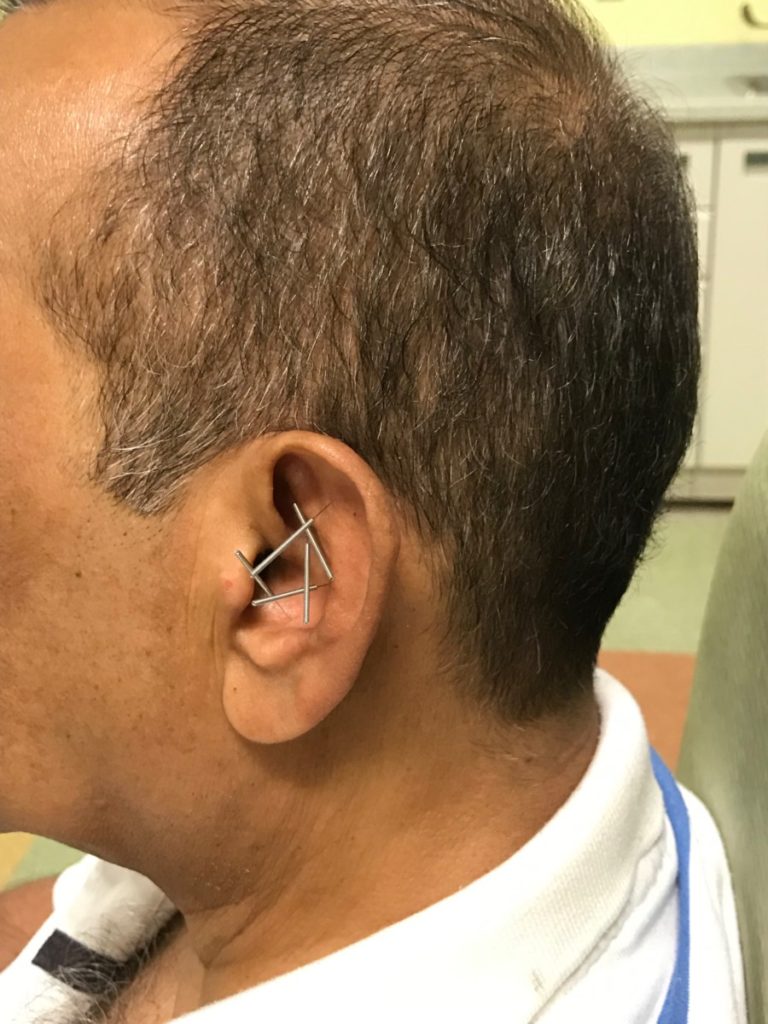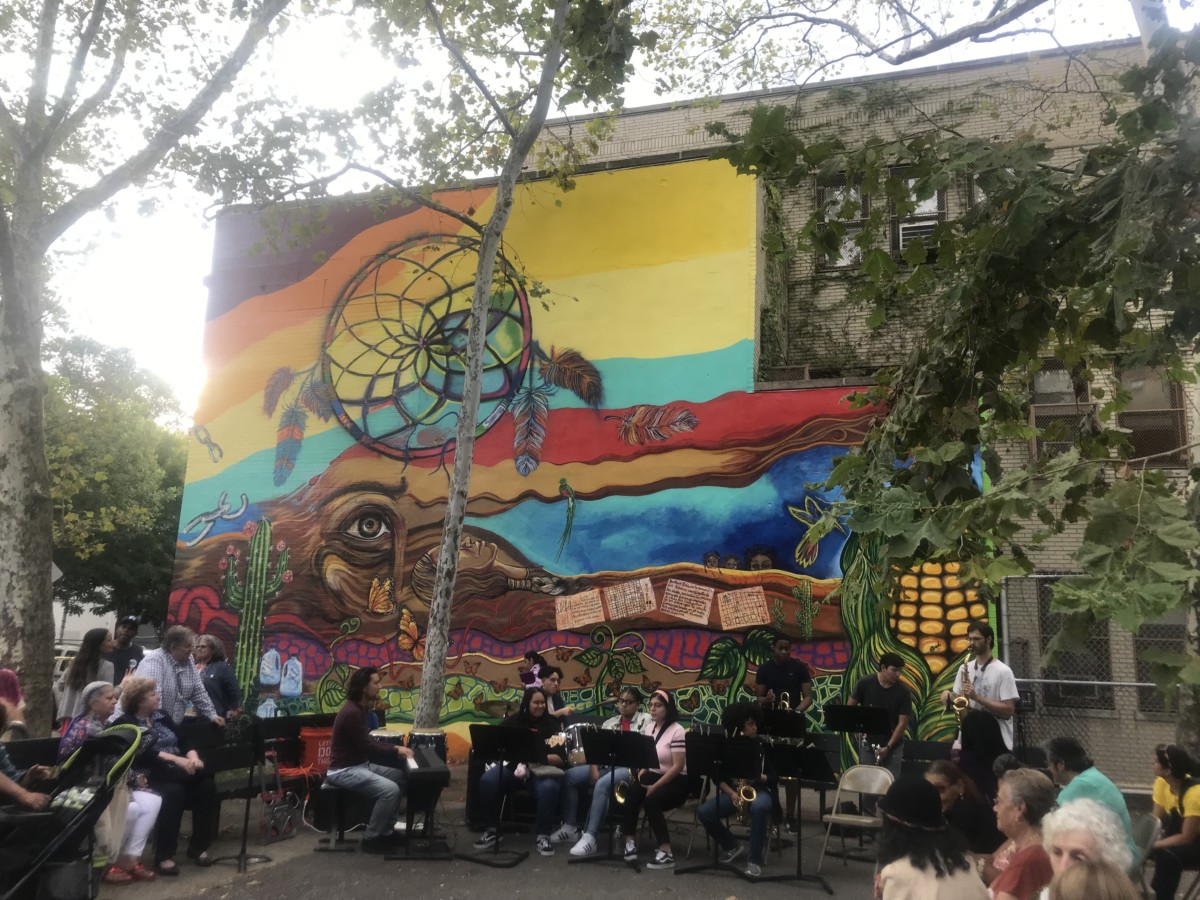In a dimly lit room at Lincoln Recovery Center in the South Bronx one September morning, six middle-aged men were sound asleep, five needles poking out each of their ears. Meditation music played from a 1990s cassette recorder.
This was acupuncture therapy, the first on the center’s agenda every weekday at the East 142nd drug treatment location. Next comes group therapy and reiki sessions.
Nearly a decade ago this center was a thriving community service hub and a crucial therapeutic refuge for those afflicted by rampaging heroin addiction in the South Bronx.
But two weeks ago, a dozen chairs in the acupuncture room remained empty. Apart from the occasional banter between patients, the waiting room was eerily quiet throughout the day.
“The center used to be more community-based,” said Angela Torres, the clinic’s supervisor and senior addiction counselor. She has been working for the program for 24 years. “We tried to keep it in the community, but there have been more regulations from the hospital.”
Lincoln Recovery Center began as a grassroots organization, developing into a core neighborhood service treating drug addiction with experimental holistic methods. But, the treatment center has since disappeared from the heart of the community, and its patient census continues to decline.
In December 2011, Lincoln Hospital administrators relocated the center from a four-story building on East 140th Street, to the basement of the Segundo Ruiz Treatment Center half a mile away. Since then, the center has seen fewer patients every year. This current August, clinicians had 21 patients, less than a quarter of its monthly average of approximately 120 before the move.
Yet, opioid overdose rates have been increasing over the last decade, particularly in the South Bronx, which has become the epicenter of a growing supply of prescription opioid drugs.
In 2018, the borough had the highest rate of overdose rates in New York City. Nearly 400 residents died, up 9% from the previous year, according to a recent report by the NYC Department of Health and Mental Hygiene. Mott Haven-Hunts Point had the second highest rates in the borough.
Lincoln Recovery Center was established as part of a community activism in the 1970s to combat an epidemic of drug addiction in the area. At the time, the New York Times reported 20,000 drug addicts were roaming the streets of the South Bronx. The activist and militant groups of the Young Lords and the Black Panthers made headlines by marching into Lincoln hospital and taking over the sixth floor to implement a drug program that became known as “Lincoln Detox.”
“The detoxification program came out of desperation because the healthcare was substandard and there were no drug programs to help addicts in the Bronx,” said Carlos Alvarez, who started working for the program when it began.
Activists began treating patients with holistic practices and methadone, a synthetic opioid receptor that is prominently used today in medication-assisted treatment (MAT) to reduce opioid withdrawal symptoms. Concerned about the addictive nature of methadone, counselors began to experiment with acupuncture after hearing about the work of Dr. H.L Wen in Hong Kong, who found that acupuncture combined with electrical stimulation could relieve opioid withdrawal signs in addicts.
Conflicts between the program and hospital administration resulted in the unit being shut down in 1978 by city hospital officials from NYC Health and Hospitals, led by then-Mayor Ed Koch. It was then relocated to an abandoned 21,000 square-foot building on East 140th Street, which the corporation bought for one dollar.

Acupuncture became the center’s main treatment method, pioneered by Dr. Michael Smith, founder of the National Acupuncture Detoxification Association (NADA). The association set the protocol known as “acudetox,” a non-verbal therapy approach, often set in a group setting that involves the gentle placement of five small, sterilized, disposable needles into specific sites in the ear.
The acupuncture association estimates that approximately 25,000 people have since been trained in this method worldwide, which continues to expand as a modality within addiction and behavioral health treatment, including prisons, military medicine and disaster relief.
Nancy Smalls began working from the program in 1973.“It was like a big family affair, it was wonderful,” she said. The center had a game room, a big backyard and would run weekly activities and trips. “We had clients coming out of the woodwork. The acupuncture had to be doing something.”
Smalls also launched the Maternal Substance Abuse program as part of the centre’s services in 1987. “No one was handling the drug treatment of women,” she said. “We found out that acupuncture worked even better for pregnant women who were withdrawing. It removed the want to get high.”
Studies on the science behind acupuncture remain varied and often inconclusive.
“Acupuncture can be helpful to any type of withdrawal, simply because it calms the sympathetic nervous system related to the fight or flight response,” said Pooja Shah, doctor of integrative and family medicine and a licensed acupuncturist. “It’s hard to research the effects, because there is a lot of variability that can change the outcome, such as the group dynamics and the relationship between the patient and the practitioner.”
A 2012 systematic review concluded that after 35 years of research by both Asian and Western scientists, the efficacy of acupuncture in the treatment of opiate addiction had not been established. A 2017 study on NADA protocol states that is not a standalone intervention as a treatment for substance abuse.
Research into acupuncture’s mechanisms is currently being conducted in Brigham Young University. “Right now it can only be used as an adjunct therapy, but it has potential,” said Scott Steffensen, professor of cognitive and behavioral neuroscience. “If you activate certain receptors in the body without using drugs, you can modify the whole nervous system in a way that it could be used to reverse the craving associated with opioid withdrawal.”
The relocation of the Lincoln Recovery Center in 2011 came as a shock to the local community and former employees. The building has been abandoned since then but is still under the ownership of NYC Health and Hospitals.
“They said the rent was too high,” said Angela Torres. “We could all have chipped in to pay a dollar.”
After the women’s program was closed down in 2013, Nancy Smalls retired. “Everybody we serviced, we made a difference in their lives,” she said. “I just don’t understand why they are not using that building. The city did a huge disservice to the population when they got rid of Dr. Smith.”
Numerous attempts to reach the communications department at Lincoln Hospital in person and by phone were unsuccessful.
Currently, 22 recovery services across New York offer acupuncture, according to the 2019 National Directory of Drug and Alcohol Abuse Treatment Facilities. Lincoln Recovery Center is the only facility listed in the Bronx.

Activist group South Bronx Unite has since been campaigning for the hospital agency to hand the building over to the local community. On September 7, plans were showcased to transform it into a H.E.A.R.T (Health, Education and the Arts) Center to house local non-profit organizations and a mural was unveiled on the side of the building.
The Lincoln Recovery Center has changed from a community hub to a more structured medical service.
“It used to give people somewhere to be, it had a homey kind of atmosphere,” said Dorine Seabrook. “Now it’s much more appointment driven, we are required to people in and out of treatment faster.”
Patients at the Lincoln Recovery Center are now referred by the Consult for Addiction and Care Team in Hospitals team (CATCH) at Lincoln hospital, the courts, or by the city’s Human Resources Administration.
Dr. Mark Sinclair is Medical Director of the CATCH program and the Lincoln Recovery Center. “We try to encourage patients who need treatment to go there,” he said. “The services at the Lincoln Recovery are great but they need to be more integrated here in Lincoln Hospital with the other patient’s healthcare needs.”
Patients are referred depending on their needs, either using the center as their sole service or on top of their methadone program.
But employees cite the location as the main reason for the lack of patients and their frustration with the administration.
“Our biggest problem is that the program is a mile away from Lincoln hospital,” said Program Director Christina Laboy. “I have pushed to set up a transportation service. People don’t end up coming here.”
“We need exposure,” said Serge Ernandez, the licensed acupuncturist at the center. “No one knows we exist here anymore.”



